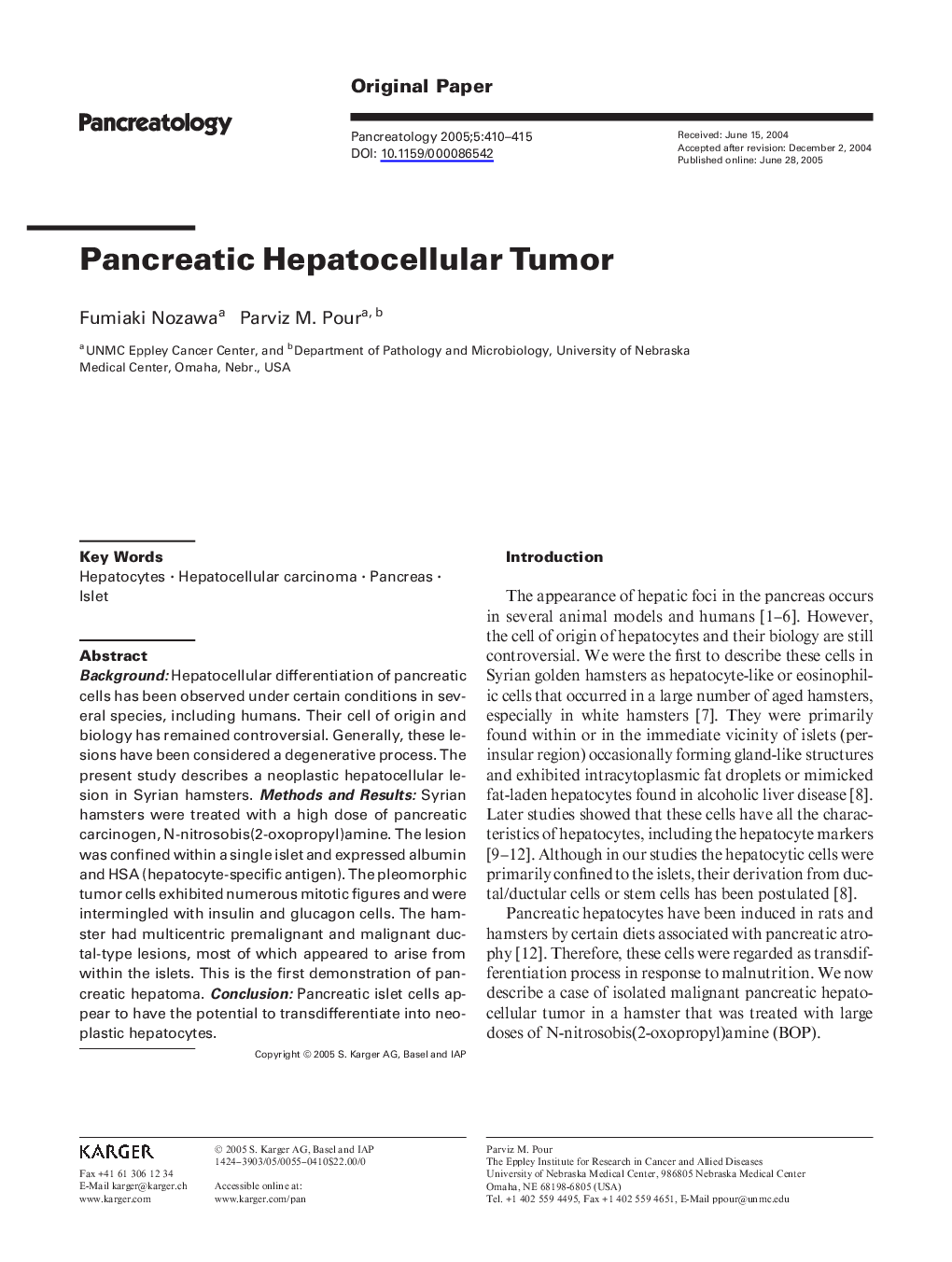| Article ID | Journal | Published Year | Pages | File Type |
|---|---|---|---|---|
| 9256133 | Pancreatology | 2005 | 6 Pages |
Abstract
Background: Hepatocellular differentiation of pancreatic cells has been observed under certain conditions in several species, including humans. Their cell of origin and biology has remained controversial. Generally, these lesions have been considered a degenerative process. The present study describes a neoplastic hepatocellular lesion in Syrian hamsters. Methods and Results: Syrian hamsters were treated with a high dose of pancreatic carcinogen, N-nitrosobis(2-oxopropyl)amine. The lesion was confined within a single islet and expressed albumin and HSA (hepatocyte-specific antigen). The pleomorphic tumor cells exhibited numerous mitotic figures and were intermingled with insulin and glucagon cells. The hamster had multicentric premalignant and malignant ductal-type lesions, most of which appeared to arise from within the islets. This is the first demonstration of pancreatic hepatoma. Conclusion: Pancreatic islet cells appear to have the potential to transdifferentiate into neoplastic hepatocytes.
Keywords
Related Topics
Health Sciences
Medicine and Dentistry
Gastroenterology
Authors
Fumiaki Nozawa, Parviz M. Pour,
